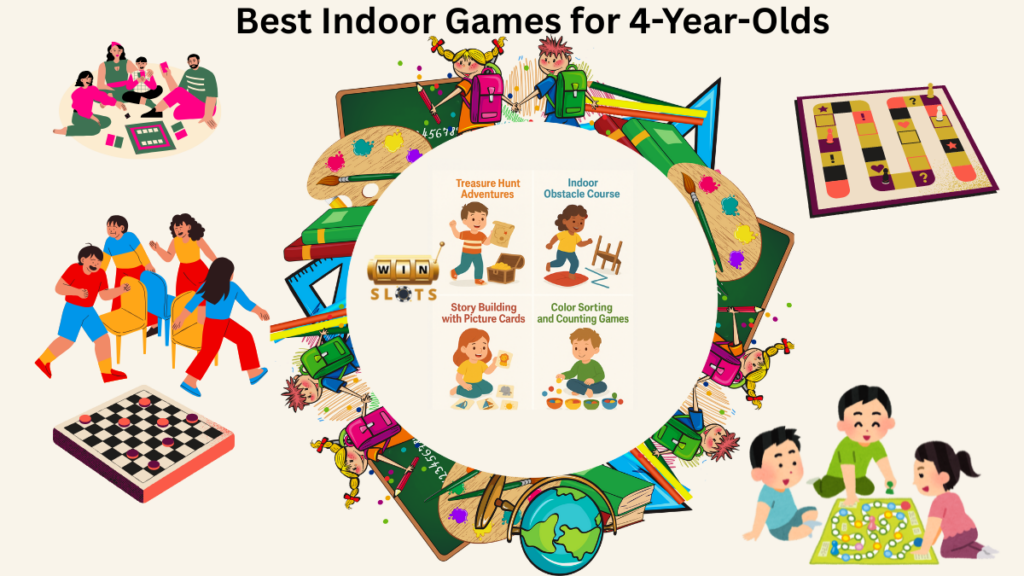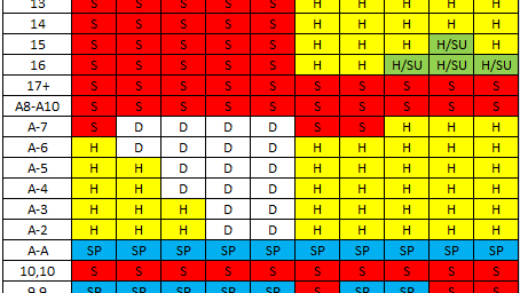Keeping a 4-year-old entertained indoors can be a challenge—especially when you’re trying to balance screen time, learning, and active play. Fortunately, 2025 brings a wide variety of indoor games for 4-year-olds that are fun, developmentally appropriate, and easy to set up at home.
For parents across the USA, these games and kids indoor activities are lifesavers during rainy days, snowy months, or when it’s just not practical to head outside. This guide highlights the most engaging options to keep your child active, curious, and learning—right in your living room.
Why Indoor Play Matters for USA Toddlers
At age four, children are in a prime phase of growth. They’re exploring independence, asking questions constantly, and developing fine motor skills, problem-solving abilities, and emotional intelligence.
Indoor games help promote:
- Creativity and imagination
- Physical coordination and strength
- Early literacy and numeracy
- Social skills like sharing, turn-taking, and patience
The key is to offer a mix of structured activities and free play, allowing toddlers in the USA to explore at their own pace while learning valuable life skills.
Best Indoor Games for 4-Year-Olds

1. Treasure Hunt Adventures
Create a simple treasure map and hide clues or objects around the house. Kids follow the map or hints to uncover a “treasure” like stickers, a snack, or a small toy.
Skills Developed:
- Problem-solving
- Spatial awareness
- Reading and interpreting symbols
Pro Tip: Use themed hunts (pirate, jungle, or space) to keep the excitement fresh every time.
2. Indoor Obstacle Course
Use cushions, tape, chairs, and toys to create an obstacle course. Let kids crawl under tables, hop over pillows, and zigzag around furniture.
Why It’s Great:
- Burns energy indoors
- Builds coordination and strength
- Encourages imaginative storytelling (e.g., “lava floor”)
3. Simon Says or Freeze Dance
Old-school but gold, these games are ideal for getting toddlers moving while listening and following directions.
Bonus: Add educational twists like “Simon says touch something red” or “Freeze if you hear a word that starts with ‘B’.”
4. Story Building with Picture Cards
Cut out images from magazines or use printed pictures of animals, objects, or actions. Let your child arrange them to create a story and tell it aloud.
What It Teaches:
- Narrative thinking
- Sequencing
- Vocabulary development
This also works great as a group activity or quiet-time option.
5. DIY Sensory Bins
Fill plastic bins with rice, beans, or sand and hide small objects inside. Give your child scoops, cups, and tongs to explore.
Perfect For:
- Tactile exploration
- Fine motor skill development
- Independent play
Safety Tip: Always supervise to ensure objects are age-appropriate and not a choking hazard.
6. Color Sorting and Counting Games
Use colored pom-poms, blocks, or paper cups. Ask your child to sort by color, shape, or size, then count each group.
Learning Benefits:
- Early math skills
- Categorization
- Concentration and focus
Turn it into a timed game to make it more exciting.
7. Puppet Theater Playtime
Encourage your child to use socks or paper bag puppets to perform a mini-play. This sparks creativity while supporting speech and emotional development.
Fun Add-On: Let them decorate their own puppets first as part of the activity.
8. Matching Games & Memory Cards
Use store-bought memory card sets or make your own using index cards. Flip them over and try to find matching pairs.
Why Toddlers Love It:
- Boosts memory
- Develops concentration
- Can be adapted for numbers, animals, or even family photos
9. “Build a Town” with Blocks or LEGO
Give your child a collection of building blocks and challenge them to build a town, zoo, or city.
Learning Opportunities:
- Planning and design thinking
- Hand-eye coordination
- Vocabulary expansion through storytelling
This can turn into hours of constructive play and even sibling collaboration.
10. Cooking Together (Mini Chefs)
Invite your 4-year-old to help with safe kitchen tasks like mixing, pouring, or decorating. Recipes like fruit kabobs, mini sandwiches, or homemade pizza are toddler-friendly.
Key Benefits:
- Introduces basic math (measuring)
- Builds independence
- Strengthens parent-child bonding
Make it even more exciting by giving them their own apron and chef hat.
Recommendation
Best Learning Apps for 2-Year-Olds in the UK and Canada 2025
Top Puzzle Games for Toddlers: Boost Brain Development in USA Kids
Creative Outdoor Games for Preschoolers: What’s Trending in Australia 2025
Canada’s Most Loved Board Games for 3–5 Year Old Kids 2025
Best Educational Games for Toddlers 2025: USA and UK Parents’ Favorites
Screen-Free Games for Kids: UK’s Top Picks for 2–5 Year Old’s
Must-Have Sensory Toys and Games for Toddlers in Australia
Fun Backyard Games for 4-Year-Olds: USA Summer Favorites
FAQ
Q1: How much indoor play is healthy for a 4-year-old?
A: Aim for at least 1–2 hours of active indoor play per day, balanced with quiet activities and screen-free time. Variety is key.
Q2: What should I do if my child loses interest quickly?
A: Rotate games weekly, involve your child in choosing the next activity, and mix structured play with open-ended options like building or imaginative storytelling.
Q3: Are indoor games enough to keep my child physically active?
A: Yes, if they include movement. Games like obstacle courses, dance sessions, and role play can provide great physical activity indoors.
Q4: How can I include learning in indoor play?
A: Focus on games that involve sorting, counting, storytelling, or memory. Even simple play can introduce key academic and social skills.
Q5: What materials should I keep on hand for indoor games?
A: Stock up on basic supplies like building blocks, craft items, soft balls, puzzles, storybooks, and sensory bin materials. These can fuel multiple activities.
Conclusion
In 2025, the best indoor games for 4-year-olds blend fun with learning, offering engaging ways for USA toddlers to stay active, curious, and connected—even inside. With just a few simple materials and a bit of creativity, you can turn any room into a playground of discovery and growth.



